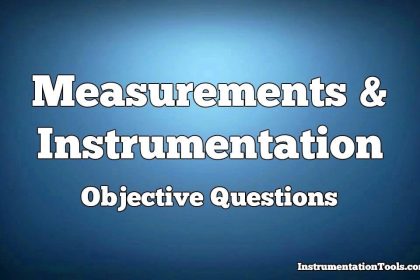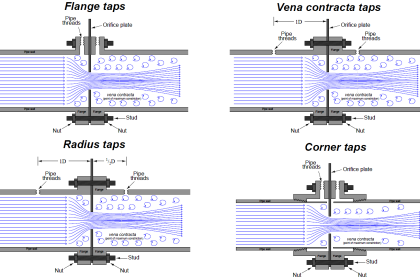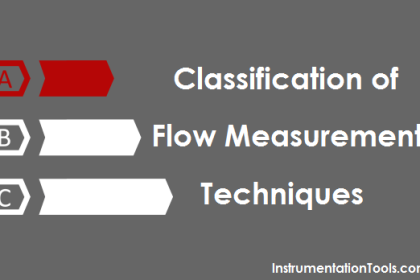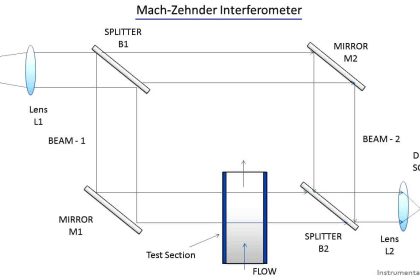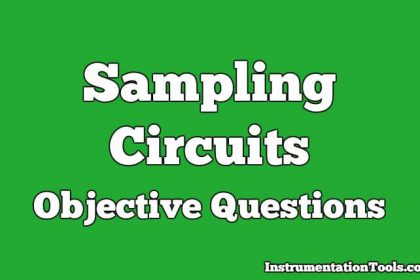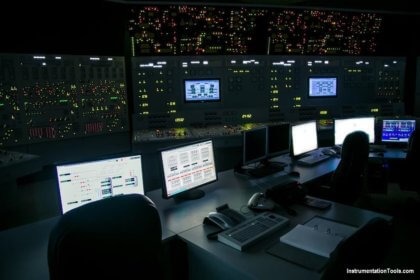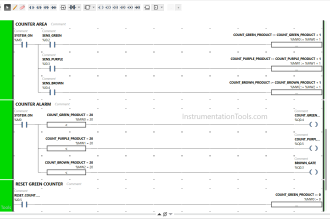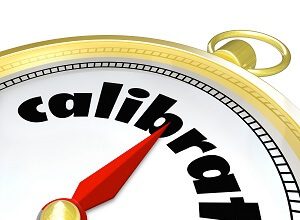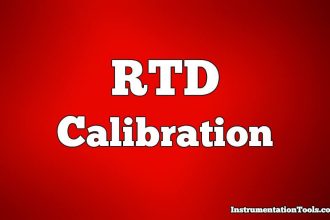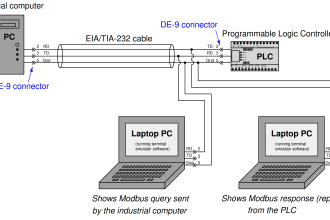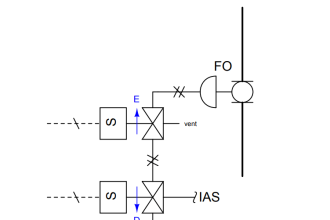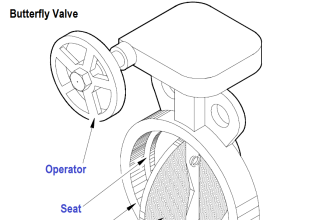Test your knowledge of Bernoulli’s Principle and flow meters with our in-depth questions focused on fluid flow, pressure, and velocity in flow measurement systems.
Bernoulli’s Principle in Flow Meters
Here this video provides you with detailed explanations for Bernoulli’s theorem questions and answers.
Question 1
What does Bernoulli’s principle relate in a fluid flow?
A. Pressure and density
B. Velocity and pressure
C. Temperature and velocity
D. Flow rate and pressure
Show the Answer
Velocity and pressure
Question 2
How does Bernoulli’s principle apply in a Venturi meter?
A. It increases flow speed
B. It decreases pressure at the throat
C. It equalizes pressure
D. It measures temperature changes
Show the Answer
It decreases pressure at the throat
Question 3
Why is pressure lower at the throat of a Venturi meter?
A. Increased fluid velocity
B. Decreased fluid temperature
C. Reduced fluid density
D. Increased fluid viscosity
Show the Answer
Increased fluid velocity
Question 4
What assumption is made about the fluid in Bernoulli’s principle?
A. Fluid is compressible
B. Fluid is at constant temperature
C. Fluid is incompressible
D. Fluid is turbulent
Show the Answer
Fluid is incompressible
Question 5
In which scenario does Bernoulli’s principle NOT apply?
A. Laminar flow
B. Turbulent flow
C. Steady flow
D. Incompressible flow
Show the Answer
Turbulent flow
Question 6
How does a Pitot tube uses Bernoulli’s principle?
A. It measures fluid temperature
B. It determines the fluid’s density
C. It measures stagnation pressure to find velocity
D. It decreases flow pressure
Show the Answer
It measures stagnation pressure to find velocity
Question 7
What is the role of pressure differential in a Venturi meter?
A. It indicates fluid temperature
B. It measures fluid viscosity
C. It determines the flow rate
D. It balances fluid velocity
Show the Answer
It determines the flow rate
Question 8
Which of the following is a key limitation of Bernoulli’s principle?
A. Assumes viscous fluid
B. Requires turbulent flow
C. Neglects friction losses
D. Assumes compressible fluid
Show the Answer
Neglects friction losses
Question 9
What happens to fluid velocity as pressure decreases, according to Bernoulli’s principle?
A. Velocity decreases
B. Velocity remains constant
C. Velocity increases
D. Velocity oscillates
Show the Answer
Velocity increases
Question 10
In an orifice plate flow meter, how does Bernoulli’s principle help measure flow rate?
A. It measures fluid temperature change
B. It detects fluid density variations
C. It relates pressure drop to flow velocity
D. It balances static pressure
Show the Answer
It relates pressure drop to flow velocity
Question 11
Why must the flow be steady for Bernoulli’s principle to be accurate?
A. To maintain constant temperature
B. To ensure consistent fluid properties
C. To avoid turbulence effects
D. To balance energy equations
Show the Answer
To ensure consistent fluid properties
Question 12
What is a key design consideration for using Bernoulli’s principle in flow meters?
A. Fluid color
B. Fluid density variations
C. Pipe material
D. Smooth, non-turbulent flow
Show the Answer
Smooth, non-turbulent flow
Question 13
Which of the following statements about Bernoulli’s principle is true?
A. It only applies to gases
B. It applies to compressible fluids
C. It assumes no energy loss
D. It neglects velocity variations
Show the Answer
It assumes no energy loss
Question 14
What is the effect of fluid density on Bernoulli’s principle?
A. Directly affects pressure drop
B. Has no impact on pressure
C. Increases temperature
D. Only affects flow direction
Show the Answer
Directly affects pressure drop
Question 15
Which factor must remain constant for Bernoulli’s equation to be valid?
A. Fluid viscosity
B. Fluid height
C. Fluid velocity
D. Fluid density
Show the Answer
Fluid density
Question 16
In which type of flow does Bernoulli’s principle most accurately predict pressure changes?
A. Compressible flow
B. Viscous flow
C. Steady, laminar flow
D. Unsteady, turbulent flow
Show the Answer
Steady, laminar flow
Question 17
Why is the vena contracta important when applying Bernoulli’s theorem to an orifice plate?
A. It is the point of maximum fluid velocity and minimum density
B. It is the point of minimum fluid velocity and maximum pressure
C. It is the point of maximum fluid velocity and minimum pressure
D. It is the point of maximum fluid temperature and minimum pressure
Show the Answer
It is the point of maximum fluid velocity and minimum pressure
Question 18
Why is Bernoulli’s principle less accurate at high speeds?
A. Fluid density decreases
B. Pressure variations become negligible
C. Compressibility effects become significant
D. Temperature becomes a factor
Show the Answer
Compressibility effects become significant
Question 19
What happens to fluid velocity as the cross-sectional area decreases in a pipe, according to Bernoulli’s principle?
A. Velocity decreases
B. Velocity increases
C. Velocity remains constant
D. Velocity fluctuates
Show the Answer
Velocity increases
Question 20
How does the orifice plate in a flow meter create the conditions described by Bernoulli’s theorem?
A. By restricting the fluid flow to decrease velocity and increase pressure
B. By restricting the fluid temperature to increase velocity and reduce pressure
C. By restricting the fluid flow to increase velocity and reduce pressure
D. By restricting the fluid flow to increase velocity and reduce density
Show the Answer
By restricting the fluid flow to increase velocity and reduce pressure
Question 21
What does the term “stagnation pressure” refer to in Bernoulli’s principle?
A. Pressure due to fluid height
B. Static pressure at a point
C. Pressure where fluid velocity is zero
D. Minimum pressure in the flow
Show the Answer
Pressure where fluid velocity is zero
Question 22
How does Bernoulli’s principle affect the pressure on an airplane wing?
A. Increases pressure on top
B. Increases pressure on bottom
C. Equalizes pressure on both sides
D. Decreases pressure on the top
Show the Answer
Decreases pressure on the top
Question 23
How does fluid compressibility affect the application of Bernoulli’s principle in an orifice flow meter?
A. It increases fluid velocity
B. It causes energy losses
C. It enhances measurement accuracy
D. It has no effect on measurements
Show the Answer
It causes energy losses
Question 24
What is the impact of Reynolds number on the performance of an orifice flow meter?
A. It stabilizes temperature
B. It affects the flow coefficient
C. It has no impact
D. It only affects laminar flow
Show the Answer
It affects the flow coefficient
Question 25
How does Bernoulli’s theorem explain the pressure drop in an orifice flow meter?
A. Pressure increases due to velocity
B. Pressure drop is due to energy loss
C. Pressure drop is due to increased fluid velocity
D. Pressure remains constant across the orifice
Show the Answer
Pressure drop is due to increased fluid velocity
Question 26
What is the relationship between the cross-sectional area and velocity in an orifice flow meter according to Bernoulli’s theorem?
A. Velocity decreases as area decreases
B. Velocity increases as area decreases
C. Area and velocity are independent
D. Area and velocity both increase
Show the Answer
Velocity increases as area decreases
Question 27
Why is Bernoulli’s theorem essential in the design of orifice flow meters?
A. It predicts temperature changes
B. It provides a basis for pressure and velocity relationship
C. It assumes fluid is compressible
D. It ignores energy losses
Show the Answer
It provides a basis for pressure and velocity relationship
Question 28
According to Bernoulli’s theorem, what happens to pressure energy as fluid velocity increases in an orifice meter?
A. Pressure energy increases
B. Pressure energy decreases
C. Pressure energy remains constant
D. Pressure energy converts to thermal energy
Show the Answer
Pressure energy decreases
Question 29
What is the significance of the pressure drop measured in an orifice flow meter?
A. Indicates temperature rise
B. Reflects the energy loss
C. Directly relates to flow rate
D. Indicates a constant flow rate
Show the Answer
Directly relates to flow rate
Question 30
How does Bernoulli’s theorem justify the use of an orifice flow meter for fluid flow measurement?
A. It relates fluid density to temperature
B. It connects pressure drop to flow rate
C. It assumes constant temperature in the fluid
D. It stabilizes the fluid’s velocity
Show the Answer
It connects pressure drop to flow rate
Question 31
What assumption does Bernoulli’s theorem make about the flow in an orifice meter?
A. Flow is compressible
B. Flow is turbulent
C. Flow is incompressible and steady
D. Flow is unsteady
Show the Answer
Flow is incompressible and steady
Question 32
According to Bernoulli’s theorem, what is the impact of fluid velocity on pressure when flowing through an orifice?
A. Pressure increases with velocity
B. Pressure decreases with velocity
C. Pressure remains unchanged
D. Pressure oscillates with velocity
Show the Answer
Pressure decreases with velocity
Question 33
Why does Bernoulli’s theorem assume negligible friction in an orifice flow meter?
A. To simplify flow calculations
B. To increase pressure drop
C. To focus on temperature changes
D. To account for fluid viscosity
Show the Answer
To simplify flow calculations
Question 34
How does Bernoulli’s theorem explain the flow rate change as fluid passes through an orifice?
A. Flow rate decreases with pressure
B. Flow rate increases with pressure
C. Flow rate is independent of pressure
D. Flow rate is proportional to the square root of pressure drop
Show the Answer
Flow rate is proportional to the square root of pressure drop
Question 35
What is the primary energy conversion that occurs in an orifice meter according to Bernoulli’s theorem?
A. Thermal to kinetic energy
B. Kinetic energy to pressure energy
C. Pressure energy to kinetic energy
D. Potential energy to thermal energy
Show the Answer
Pressure energy to kinetic energy
Question 36
How does Bernoulli’s theorem relate to the concept of head loss in an orifice flow meter?
A. Head loss is minimized by increasing velocity
B. Head loss is unrelated to Bernoulli’s theorem
C. Head loss is the energy loss due to pressure drop
D. Head loss increases fluid temperature
Show the Answer
Head loss is the energy loss due to pressure drop
Question 37
What does Bernoulli’s theorem suggest about the relationship between flow velocity and pressure in an orifice meter?
A. Pressure and velocity are directly proportional
B. Pressure remains constant as velocity changes
C. Velocity increases as pressure decreases
D. Pressure increases as velocity increases
Show the Answer
Velocity increases as pressure decreases
Question 38
Why is Bernoulli’s theorem particularly useful in understanding the operation of orifice flow meters?
A. It explains temperature fluctuations
B. It relates pressure, velocity, and flow rate
C. It assumes fluid compressibility
D. It only applies to laminar flow
Show the Answer
It relates pressure, velocity, and flow rate
Question 39
According to Bernoulli’s theorem, what happens to the kinetic energy of fluid as it flows through an orifice?
A. It decreases
B. It remains unchanged
C. It increases as pressure decreases
D. It converts into potential energy
Show the Answer
It increases as pressure decreases
Question 40
In which scenario would Bernoulli’s principle be least applicable?
A. Fluid flowing through a narrow pipe
B. Fluid flow with rapid expansion
C. Fluid moving in a steady, incompressible manner
D. Fluid flow in a slowly converging pipe
Show the Answer
Fluid flow with rapid expansion
Read Next:
- Differential Pressure Flow Transmitter Questions
- Gas and Liquid Measurement Processes Solutions
- Factors Affect the Stability of Flow Meter Readings
- Pitot Tube Problems and Troubleshooting Steps
- Troubleshooting DP Type Transmitter Problems


